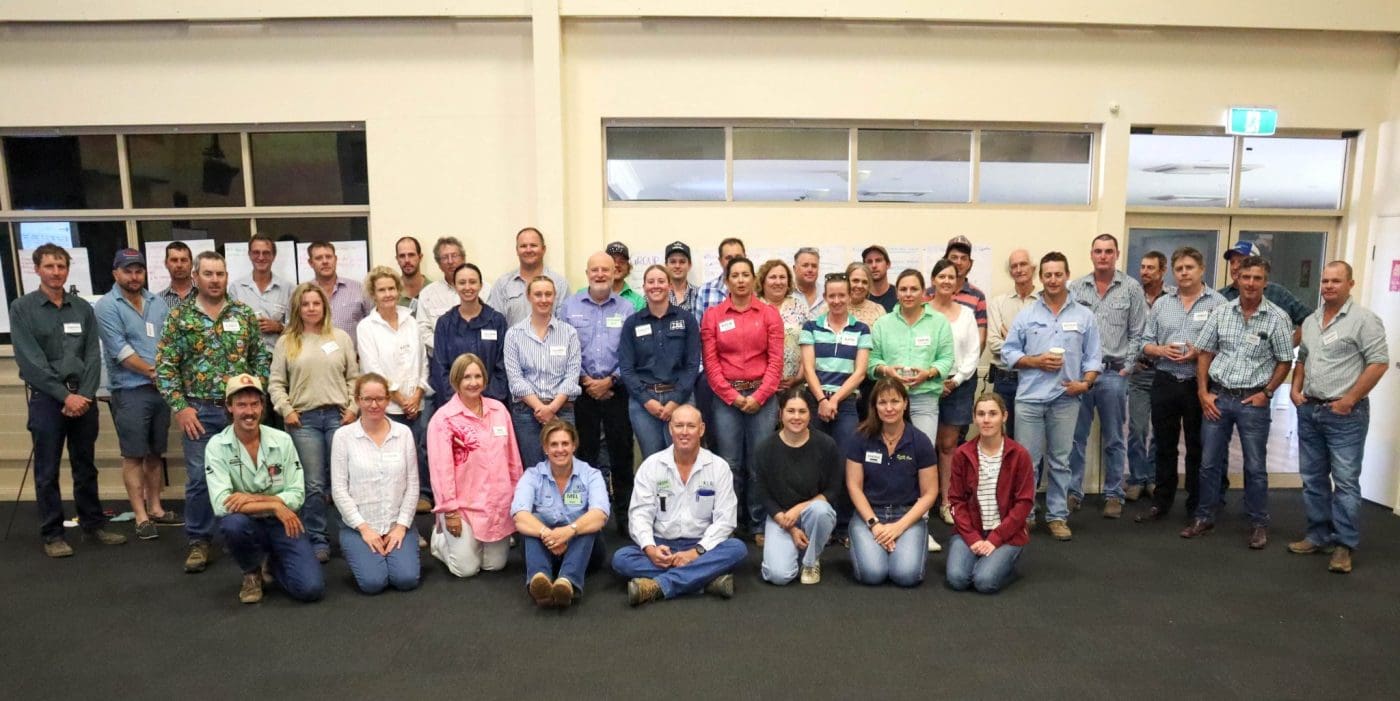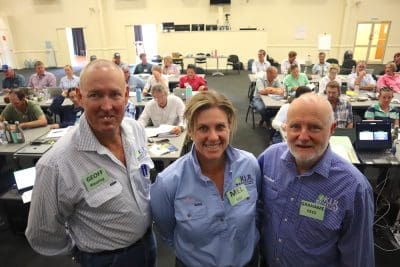“Sell-buy” livestock marketing courses in Australia continue to attract strong producer attendances more than 20 years after three cattle producers from Queensland and NSW began sharing their learnings from American stockmanship expert Bud Williams. Last week Beef Central attended a KLR course in Central Queensland to see if we could unlock a few livestock marketing secrets for ourselves. Here’s what we found.
As a rural journalist I have heard cattle producers over the years talk about “selling and buying” on the same market.
To be brutally honest, I have never quite been able to wrap my head around what that really meant.
I was also intrigued at how the same producers would follow-up by commenting that it really didn’t matter to them which way the market turned next, because, up or down, there was always a profit margin to be made.
Seriously? Isn’t the point of buying stock to sell them at a future point in time for a greater value than you paid?
And isn’t a downward market always going to make that much harder to achieve?
This is the part I’ve always struggled to comprehend.
So when I heard KLR was holding a two-and-a-half day course in Emerald last week it seemed like a golden opportunity to bite the bullet and try to understand once-and-for-all what sell-buy livestock marketing is and how it manages to defy the basic laws of common sense.
The first thing that surprised me was how many others were also just as interested.
At about 8:30am last Tuesday morning about 50 people wandered into the cavernous church hall in a quiet Emerald street where the course was hosted. It turns out even more were booked in but harvest issues meant some couldn’t make the course.
The course participants covered pretty much every age demographic from young to old, and included people with significant livestock herds and property holdings to others with stock running on agisted or leased land to others again with no livestock or land at all but keen to begin breeding or trading their own in future.
The group included full-time family farmers and property managers, part-time producers with off-farm incomes, livestock agents and managers with large agricultural corporates.
What is KLR?
For those unfamiliar with the concept KLR is a livestock management and marketing program that was developed by three Australian cattle producers – the late Rod Knight, Jim Lindsay and Grahame Rees (‘KLR’ is an acronym of the first letters of their surnames) – based on their first-hand learnings from influential American livestock handling and marketing expert the late Bud Williams.
For more than 20 years the KLR team has been running schools across Australia, and last year held one in America, teaching other producers how to apply a series of core livestock marketing principles to their own cattle and sheep businesses.
The KLR training team has recently expanded to include another two instructors – Mel Kiel from Yeoval, NSW and Geoff Wearing from Hughenden in North Qld. Both are cattle producers and graduates of previous KLR courses who now practice the principles daily in their own operations.
While many were there as individuals or couples or family units, the course could be described as learning as a group sport, with plenty of interaction between instructors and participants and between participants themselves throughout.
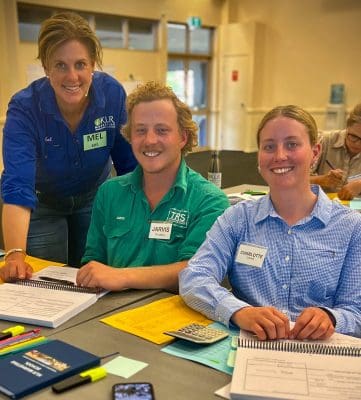 It is learning that follows the old educational mantra: “Tell me and I’ll forget, show me and I’ll remember, involve me and I’ll understand”. Group discussions were held regularly to consider, question and challenge what had just been learned in the previous session. An interactive simulation based on actual market dynamics was also used to bring many of the concepts together – in the process highlighting that it is in fact possible to make as much, even greater profits, in a falling market at times than a rising market.
It is learning that follows the old educational mantra: “Tell me and I’ll forget, show me and I’ll remember, involve me and I’ll understand”. Group discussions were held regularly to consider, question and challenge what had just been learned in the previous session. An interactive simulation based on actual market dynamics was also used to bring many of the concepts together – in the process highlighting that it is in fact possible to make as much, even greater profits, in a falling market at times than a rising market.
Opening your mind to shift from the “buy-sell” mindset we inherently know and understand to a “sell-buy” mindset that KLR teaches can take some mental gymnastics to get your head around initially.
Some grasp it quickly, others (like me) take a little longer. It’s certainly possible some don’t get it (or get it but don’t accept it) at all.
It goes something like this:
It would take a much longer article than this to cover everything you’re taught in a KLR school, but a summary of the key concepts and principles goes something like this:
Cattle and sheep markets traditionally follow a “buy-sell” approach.
Producers buy animals in the expectation of selling them in future for more than they paid for them.
A challenge with the buy-sell method is that it depends on selling animals at a point in future when market conditions are unknown.
Price movements between the buy and sell can introduce stress and emotion into the equation and result in less than optimal marketing decisions being made.
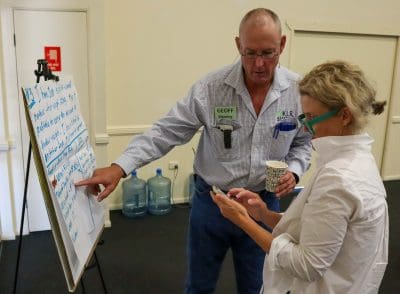 By contrast, KLR teaches a “sell-buy” approach or as they say “a sell and replace approach”, as you are not always replacing with livestock, sometimes it is grass or the progeny in a breeding enterprise.
By contrast, KLR teaches a “sell-buy” approach or as they say “a sell and replace approach”, as you are not always replacing with livestock, sometimes it is grass or the progeny in a breeding enterprise.
It works on the basis of selling and buying on the same market, working on what is known – ie that day’s actual prices – rather than what cannot be known – where prices will definitely be on the open market at some point in future.
When animals are sold, the aim is to replace them with new stock on the same market.
That is when replacements can be purchased at a profitable margin relative to the stock being sold, and when there is existing grass on hand (not anticipated rain) to carry the replacement stock for the time required.
Otherwise sale proceeds are held until the next replacement opportunity presents.
At the heart of the sell-buy process is a simple formula: the sale price of the animals, minus their ‘cost of carry’ (the overhead and direct costs required to carry those animals through to sale, expressed as a weekly “agistment rate”), minus the buy price of the replacement animals equals profit.
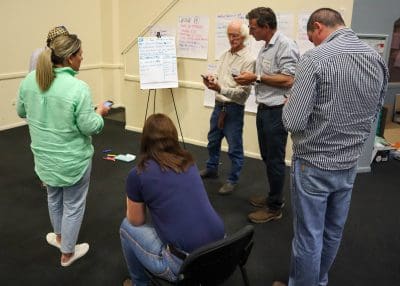 KLR students are shown how to use specialised spreadsheets or the KLR Calc app to calculate which animals are overpriced or underpriced to their business on any given day.
KLR students are shown how to use specialised spreadsheets or the KLR Calc app to calculate which animals are overpriced or underpriced to their business on any given day.
Decisions are based on maintaining a balance between grass, livestock and money – with available grass always at the foundation of any decision.
Maintaining continuous grass and financial buffers, and only buying stock after the money to fund their cost of carry for the length of time they are expected to be on your hands has been set aside, are also heavily emphasised.
Whether an animal is overpriced or underpriced to each business comes down to each producer’s individual circumstances and the animals they are carrying at any given time. Animals that may be overpriced for one producer’s business on a given day could be underpriced to another producer’s business at the same time.
Trading margins can also be found regardless of whether a market is climbing or falling.
KLR has become short-hand for cattle trading but it was interesting to note that a decent chunk of the course is also dedicated specifically to producers with breeding stock. Breeders are able to apply the KLR principles when making a decision for example, whether it is profitable to take steer weaners to a feedlot entry or sell as a weaner.
A take-home message is that you can have breeding enterprise and a trading enterprise, and you can apply the KLR principles to both. “You can still love your breeders, this just helps to make them more profitable,” is how one instructor explained it.
Like any learning experience it is bit of a roller-coaster process – challenging periods to grasp new concepts that test fixed former views interspersed with moments of lightning bolt insights (or epiphanies even, given we were sitting in a church hall).
 By the end of the first morning I was wondering if I would indeed “get it”.
By the end of the first morning I was wondering if I would indeed “get it”.
But by the end of two and a half days it was clear the process works.
A concept I had long thought tested common sense now seems to make perfect sense.
I can only share my experience, which was highly positive. It’s also important to stress that this article is not an advertisement for KLR, just a first-hand account of what I saw and learned as a rural journalist undertaking the course, and observations that may hopefully be of interest to others wondering what a KLR course is like.
I can’t speak for others, but I’d recommend doing a KLR course without hesitation if you have livestock or any interest in getting into the livestock business some time in the future. The learning process is well-constructed, taught by practical people with a wealth of first-hand knowledge and experience to share, and, in my opinion, it must be highly effective, because if I can get my head around sell-buy marketing in two and a half days, I reckon anyone can.
Even if you don’t end up putting the principles into practice, it will inevitably make you think hard about how you handle the important task of selling livestock. You’re also guaranteed to get to know plenty of other great industry people along the way. If anyone else who has done this or a previous KLR course would like to share their perspective, you’re welcome to do so in the comments section below.
Just one final thing I learned: The course is a powerful testament to the late Bud Williams’ extraordinary capacity for out-of-the-box thinking and original insights. Over two-and-a-half days numerous pearls of wisdom and memorable quotes drawn from the American livestock handling and marketing guru who passed away in 2012 appeared on the screens before us, often prompting furious note taking to capture them before they disappeared.
There were too many to quote here, but one in particular seemed like a most fitting note on which to close this article:
“The number one unfair advantage in grazing is knowing how to sell livestock”.

